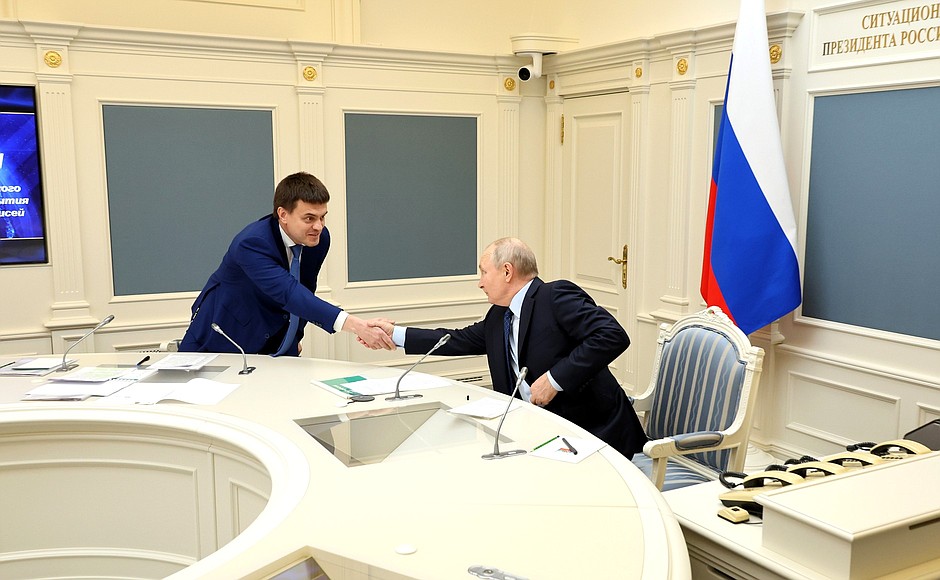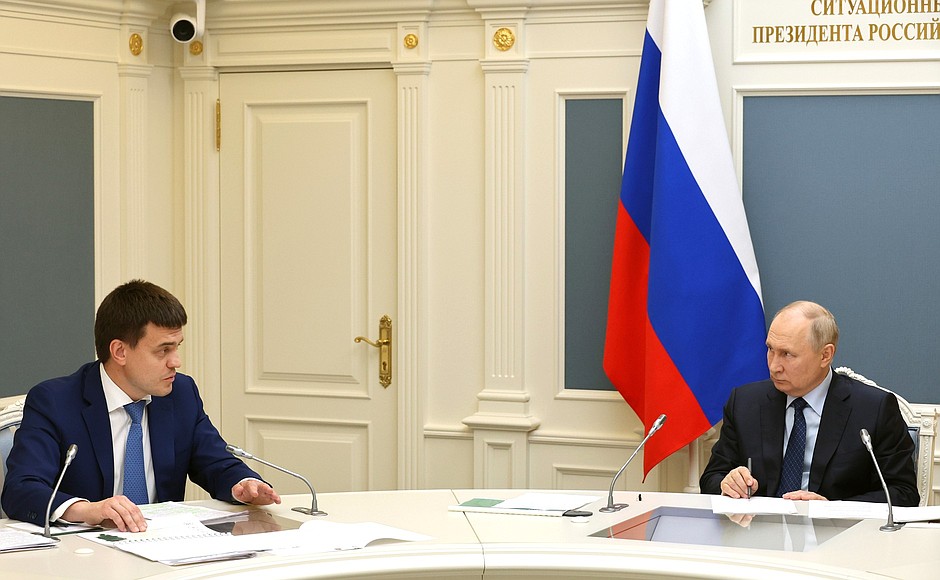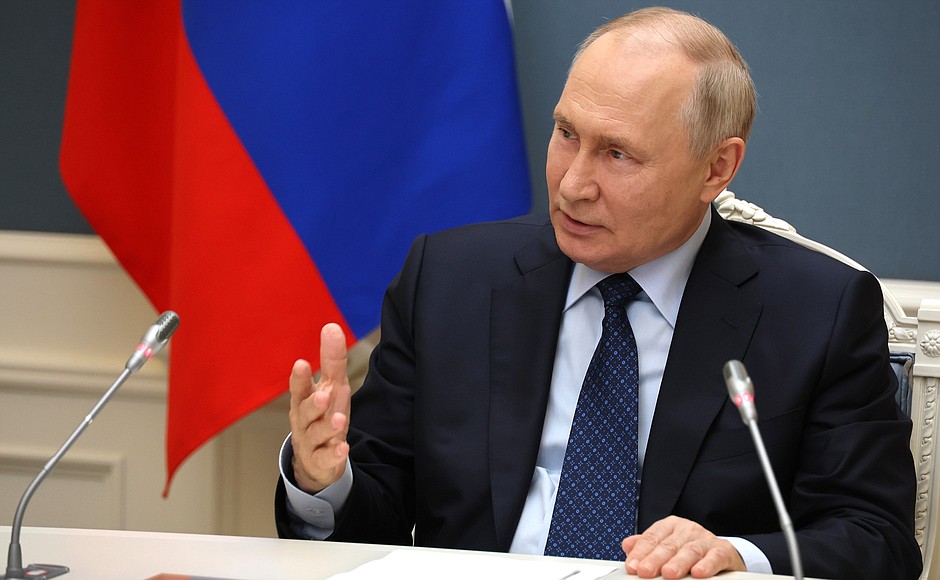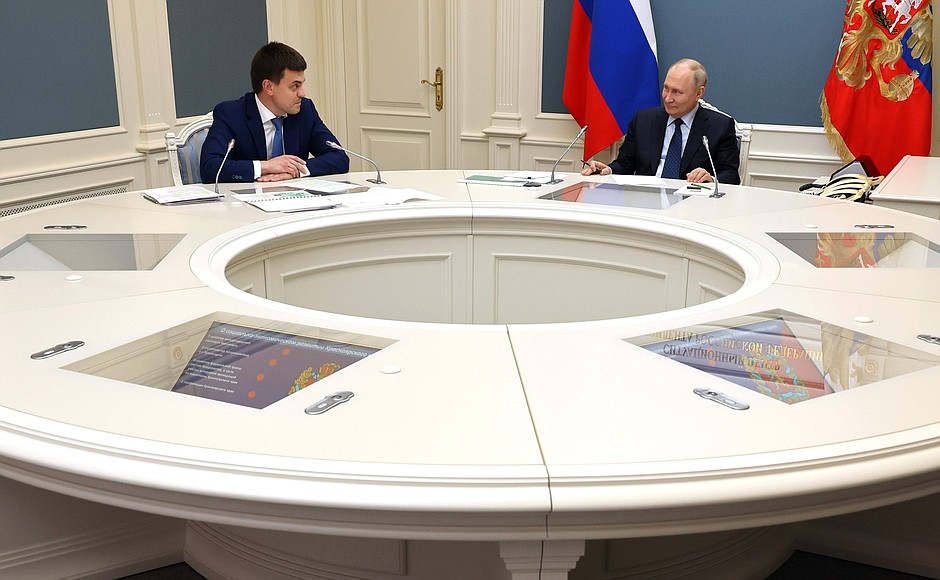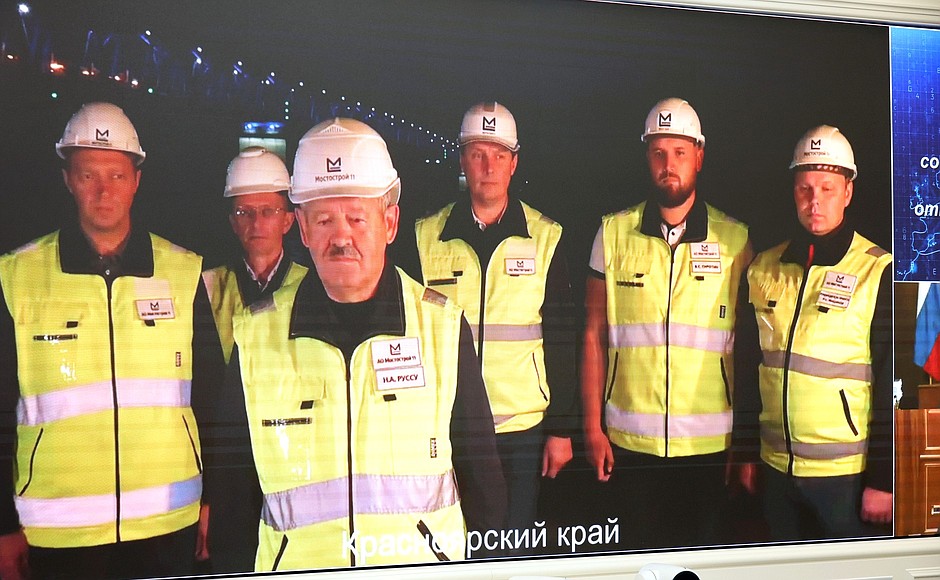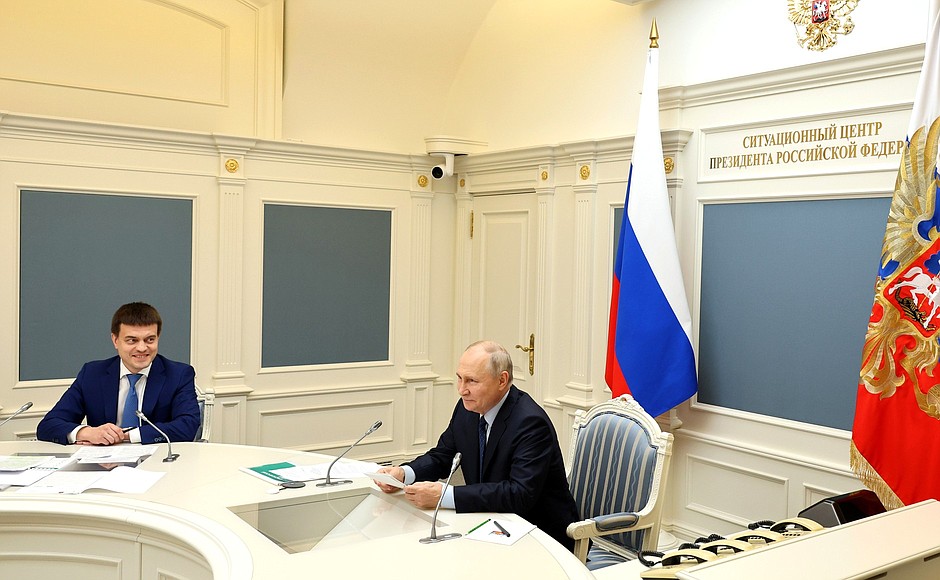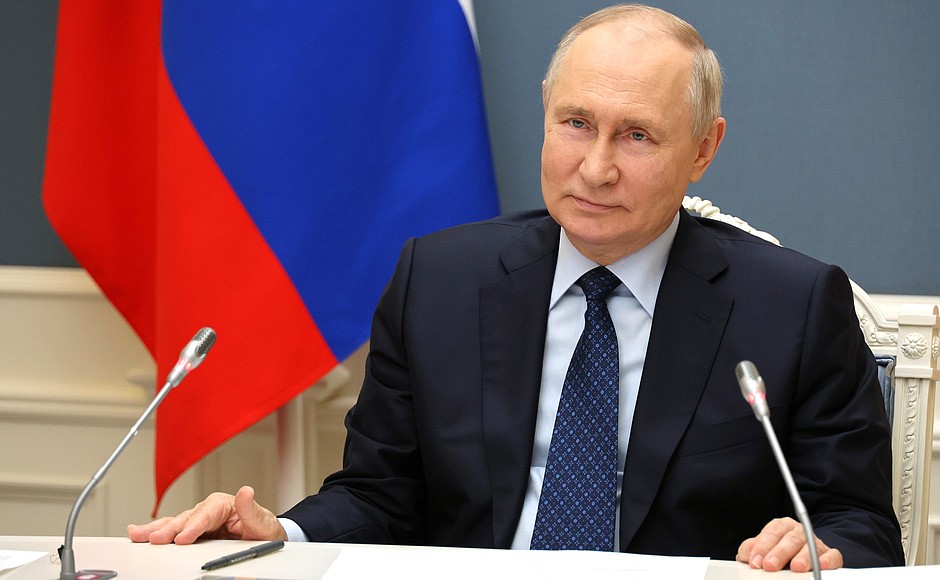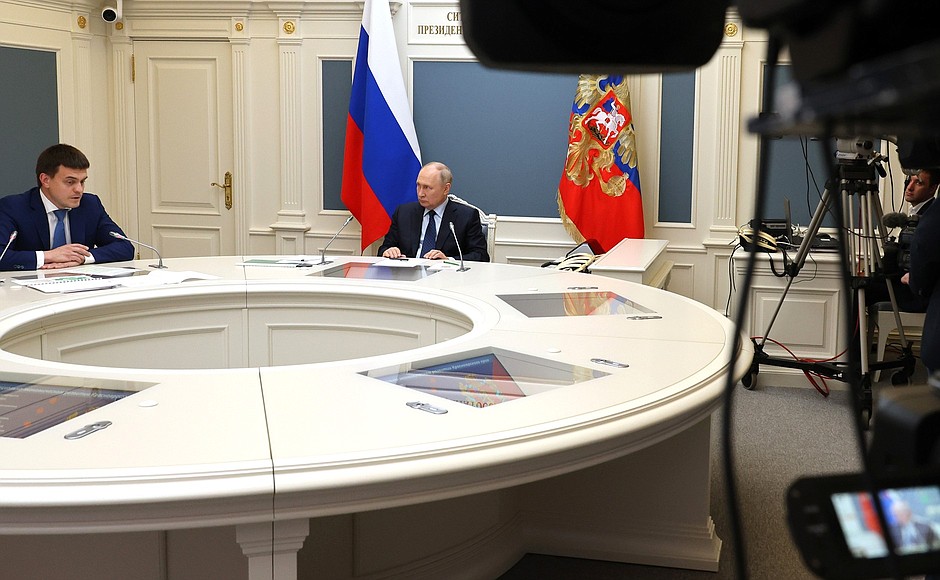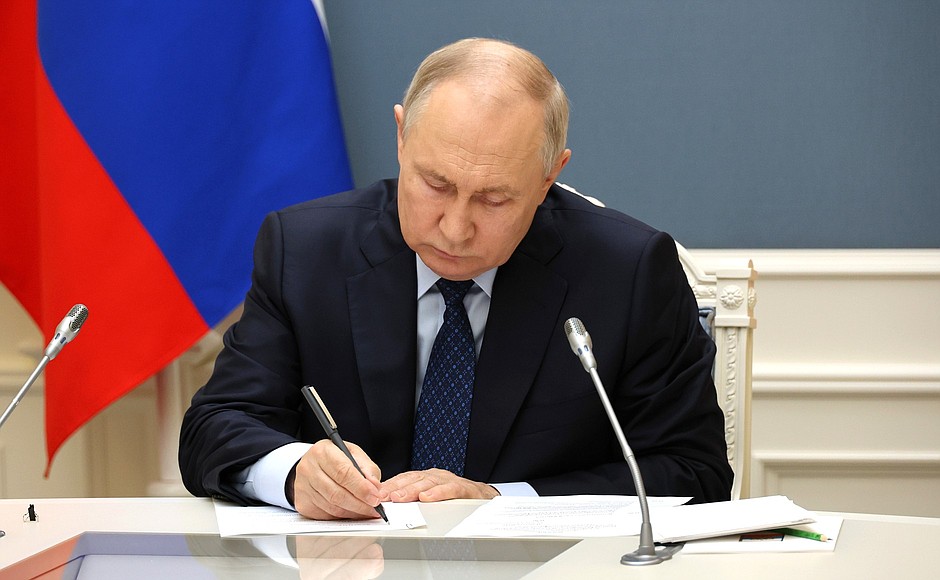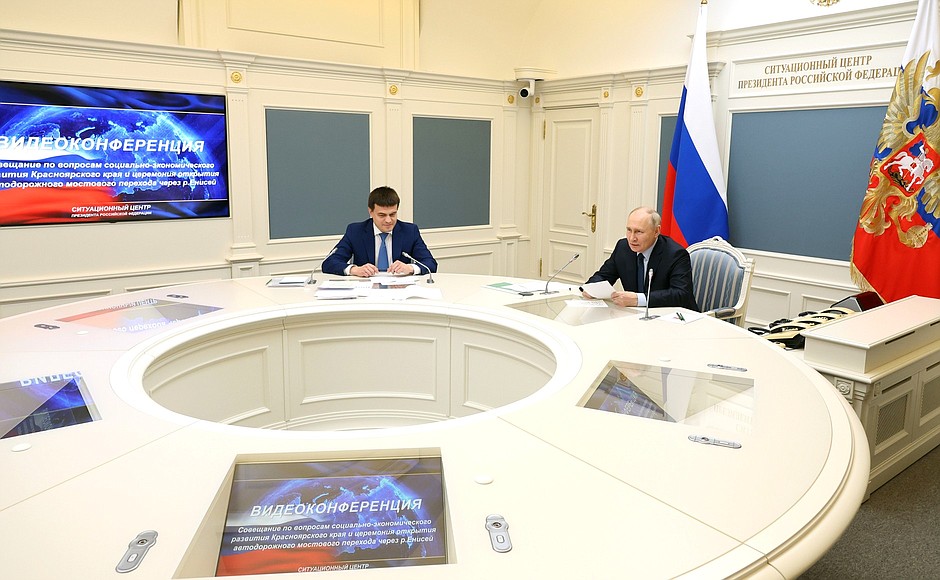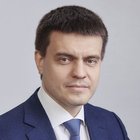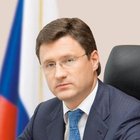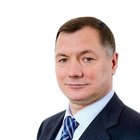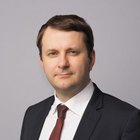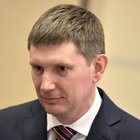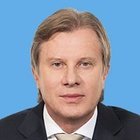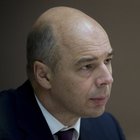Acting Governor of the Krasnoyarsk Territory Mikhail Kotyukov took part in the meeting in person, while deputy prime ministers Viktoria Abramchenko, Alexander Novak, Marat Khusnullin, Presidential Aide Maxim Oreshkin, Minister of Economic Development Maxim Reshetnikov, Minister of Transport Vitaly Savelyev, and Minister of Finance Anton Siluanov joined the meeting via videoconference.
During the meeting, the President took part in the opening ceremony of a new highway bridge across the Yenisei River near the village of Vysokogorsky in the northern Krasnoyarsk Territory. The bridge will ensure a stable year-round transport connection between the central districts of the region and the North Yenisei district, one of the largest gold mining centres in Russia. This bridge, over two kilometres long, eliminates the seasonal ice and ferry crossings from this route, thus ensuring uninterrupted cargo shipments.
* * *
President of Russia Vladimir Putin: Colleagues, friends, good afternoon.
The regional agenda is a large part of our work, and our meeting today is dedicated to the development of the Krasnoyarsk Territory. Next to me is Acting Governor of the region Mikhail Kotyukov.
I have asked him just now; it is already late where you are, but I can see the workers standing there. He says they are strong and they are used to working day and night. They opened this bridge ahead of schedule, something we will discuss today, and even met the allocated budget, which is not always the case. So, Mr Siluanov can rest assured that everything is in order, and there are no cost overruns for infrastructure development in this case.
The Krasnoyarsk Territory is one of the largest regions in the Russian Federation; it is second in area after Yakutia. It is also one of the leading economic centres in Siberia, that’s for sure; a region with a powerful mining and manufacturing industry, with an advantageous geographical position and, of course, with huge potential in the social sphere, education, science, tourism, transport, and high technology, among other things.
Of course, we know this, and I have visited the Krasnoyarsk Territory many times, as well as its enterprises, where I talked with people. I have to say first that these people are smart, modern, and true professionals in their areas almost everywhere – and with the firm Siberian character.
In April 2023, Mikhail Kostyukov became Acting Governor of the Krasnoyarsk Territory: he is here, to my right. I am sure that over these four months, Mr Kostyukov, you were able to assess the situation in the region, single out the most acute problems, take emergency measures and outline tasks for the future.
Today my colleagues from the Government and I will listen Mr Kotyukov’s report on the development of the Krasnoyarsk Territory, and together with all of them, discuss what additional mechanisms must be used at the federal level to successfully implement the development plans for the territory and deliver tangible results for the people living in this enormous territory.
At the beginning of our meeting, I would like to note several things.
First, economic growth is the foundation for the confident development of the region and the resolution of social issues.
As I have already said, the Krasnoyarsk Territory has great amounts of natural resources: coal, oil, iron and polymetallic ores, gold, nickel, and rare earth metals. In addition, the region is traditionally rich in coniferous forests, water, and fertile land.
Many industrial enterprises in the region hold leading positions both in Russia and in global markets. It is important to ensure their technological and environmental progress.
There are opportunities to expand the extraction of resources and the development of new distinct deposits, and this is currently underway, for example, in the Arctic, in Taimyr in the north of the Krasnoyarsk Territory.
However, I would like to stress that the main focus should be placed on deepening the processing of raw materials, and the production of high value-added products, both for the domestic market and for export. This applies, among other things, to the agricultural sector, mining and timber industries, and the fuel and energy sector.
As you know, special support measures for the real economy are envisaged at the federal level. I mean preferential interest rates for businesses; government guarantees and subsidies for projects to adopt the best available technology. I hope very much that they will also be widely used at the enterprises of the Krasnoyarsk Territory.
I would like to repeat: it is important for us to form a more up-to-date and flexible economic structure for the region and Siberia as a whole, to create new, well-paid jobs along the entire production chain, to ensure the growth of people’s incomes and, therefore, the well-being of Russian families as well.
And this will certainly have a positive impact on the demographic sphere, on attracting skilled specialists who will live and work here.
Personnel is one of the basic, key issues for the Krasnoyarsk Territory and for many other regions of Russia. The sectors of the national economy, including manufacturing, agribusiness, tourism and services, are rapidly developing and gaining momentum, and they are in urgent need of an influx of specialists: workers, engineers, managers and other professionals.
It is necessary to strengthen the education system specifically for the regional economy, and coordinate the efforts of colleges, universities, and industrial enterprises through regional educational centres, research and production associations.
Second. Development of logistics and transport infrastructure is a separate issue. These projects include expanding the Trans-Siberian Railway, building up Northern Sea Route capacities, Arctic ports, air harbours, and building and repairing highways.
All are of particular importance for the Krasnoyarsk Territory, and for Siberia, for the whole country; both for business and for citizens, for the most convenient transport links.
Of course, we are talking a lot now – well, not now, but over recent years – on this topic and doing a lot. But we need to keep up the momentum.
One of these projects has already opened, we started with it: the bridge across the Yenisei near Vysokogorsky. As Mr Kotyukov said, it is the northernmost bridge across the Yenisei River, and it will establish year-round connections with the North Yenisei District, one of our largest centres in the gold mining industry.
I would like to take this opportunity to thank all those involved in the implementation of this project – engineers, designers, builders – and wish them further success.
Of course, gas distribution in the Krasnoyarsk Territory is a special effort in the Krasnoyarsk Territory. According to experts, it can be carried out either on the basis of the capacities of the designed Power of Siberia-2 gas pipeline or as an independent project. It is necessary to promptly choose the optimal solution. Citizens, business, of course, are very much looking forward to it, because gas supply, it is well known, is a critical resource for the economy, for resolving environmental problems, and for individual housing construction.
In this regard, the third thing. It is necessary to ensure the development of social infrastructure in the communities of the Krasnoyarsk Territory, not only in the leading industrial centres, but also in relatively small towns that are developing near large enterprises. Among other things, I mean improving the quality and accessibility of medical services, updating schools, resettling people from dilapidated and emergency housing, and developing infrastructure for sports and active living.
I would like to remind you that in recent years at the federal level we have launched the so-called infrastructure menu for the regions, including treasury and infrastructure budget loans, and financing from the National Wealth Fund and the Territorial Development Fund.
In the Krasnoyarsk Territory, these resources should also be used to repair utility networks, upgrade mass transit and to serve other purposes that have a direct bearing on the quality of people’s lives.
I would like to emphasise once again: the development of infrastructure, healthcare, education, culture and social protection systems, and, of course, the environmental situation and air quality in towns and villages should meet modern standards. People's lives should be comfortable, healthy, if I may say so, and prosperous.
I would like to emphasise that this is the key performance indicator for the regional authorities and municipal teams at all levels of government.
This is what I would like to say at the beginning. I now give the floor to Mr Kotyukov. Please.
<…>
